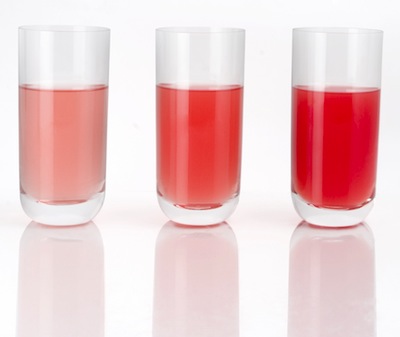Fooducate Blog - Finally? A Red Food Coloring NOT from Bugs or Petrochemicals |
| Finally? A Red Food Coloring NOT from Bugs or Petrochemicals Posted: 13 Aug 2012 05:18 AM PDT New here? Get our iPhone or Android App to scan & choose healthy groceries! Or try Fooducate on the Web! Red is a very appetizing color. We eat with our eyes, and when we see a rich red strawberry, a Red Delicious apple, or other foods draped in red, we want want them! That’s why manufacturers have been adding red coloring to foods for years. The three most popular coloring solutions each come with a set of problems:
Enter a new solution from a company called LycoRed, which claims to have solved the shortcoming of the above colorings. According to LycoRed, they use a patented process to produce an antioxidant-rich lycopene compound from California-grown, non-GMO tomatoes. The company claims that production levels have more than doubled in recent months to meet the growing demand. The annual market for lycopenes is $60-80 million dollars a year, according to the company. Lycored has been in business for about 15 years creating red and orange hues from tomatoes and carrots. We recently interviewed a marketing representative to learn more this coloring. [Fooducate] How strong is the color compared to carmine? [LycoRed] Tomat-O-Red's color is a vibrant red, with the option of producing a wide range of hues. It is often used as a substitute for carmine in various food applications and can provide the same red shades and colors as carmine. [Fooducate] how shelf stable is it? [LycoRed] Tomat-O-Red is stable when stored in a dry place, at 4 degrees Celsius and in the original packaging. An opened pack should be resealed, kept out of direct sunlight, stored at 4 degrees Celsius and used as soon as possible. Tomat-O-Red does need to be refrigerated before opening and being added to food and beverages. Used as directed, once formulated in the products, it does not require refrigeration, although some of the products that use Tomat-O-Red might. For example, it can be used in smoothies that require refrigeration, and it can be used to color cakes and confectionary products, which do not. [Fooducate] Can Tomat-O-Red be used in all places carmine can? [LycoRed] Tomat-O-Red is successfully used in multiple food applications and products, often as a substitute for carmine. Tomat-O-Red has been used for coloring in many commercial products, for example soft drinks, juices, alcoholic beverages, confectionery, chewing gums, sauces, cake icings, surimi for meat analogues and many more. [Fooducate] what are the costs compared to carmine, compared to red #40? [LycoRed] Carmine prices are continually fluctuating. In general, Tomat-O-Red is a small premium over the price of carmine. —- And of course, both are more expensive than the synthetic Red #40. For manufacturers that use Red #40, this natural solution is not an option because it is too expensive. But for companies like Starbucks, that saw a strawberry frap fiasco a few months ago over the use of carmine as a coloring, LycoRed could be the solution. Asides from the yuck factor, tomato extract works better for vegetarians, vegans, and people who keep halal or kosher (no bugs allowed). Get Fooducated: Follow us on twitter: twitter.com/fooducate on facebook: facebook.com/fooducate |
| You are subscribed to email updates from To stop receiving these emails, you may unsubscribe now. | Email delivery powered by Google |
| Google Inc., 20 West Kinzie, Chicago IL USA 60610 | |



No comments:
Post a Comment